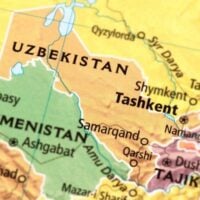Deadline: 14-May-21
The U.S. Department of Agriculture (USDA), Natural Resources Conservation Service (NRCS) is seeking applications for its Alaska State Conservation Innovation Grants (CIG) Program that stimulates the development and adoption of innovative conservation approaches and technologies in conjunction with agricultural production.
CIG projects are expected to lead to the transfer of conservation technologies, management systems, and innovative approaches (such as market-based systems) to agricultural producers, into government technical manuals and guides, or to the private sector.
CIG generally funds pilot projects, field demonstrations, and on-farm conservation research. On-farm conservation research is defined as an investigation conducted to answer a specific applied conservation question using a statistically valid design while employing farm-scale equipment on farms, ranches, or private forest lands.
CIG Priorities
- Economic/Financial case studies on successful SHMS across varied production systems that include quantifying onsite net profit and offsite impacts (e.g., soil erosion, nutrient losses, water and air quality).
- Develop innovative ways to control slugs, or voles or other common pests in SHMS.
- Develop, demonstrate, inform, and promote design and implementation of SHMSs that are location- and production system-appropriate, economically viable, and improve soil health/soil functioning (e.g., optimize nutrient availability, optimize productivity, control soil-borne diseases, pests, increase plant available water, increase resilience to extreme weather), including one or more of the following subtopics:
- Implementation strategies for feasible transition from degraded soils in varied production systems.
- Innovative approaches for adopting soil health-promoting practices in relatively cool and/or wet climates (e.g., strip tillage, short-season cultivars, inter-seeding of cover crops).
- Integration of livestock into existing cropping systems, including applicable technologies.
- Innovative approaches on irrigated lands, including adapted irrigation system design, consideration of one or more of the following: soil sodicity, soil salinity, nutrient management, irrigation water quality and quantity issues, and/or transition strategies from irrigated to non-irrigated systems.
- Transitions to more diverse cropping rotations and grazing systems.
- Optimal species mixes, seeding rates and seeding methods (e.g., inter-seeding, inter-cropping, frost-seeding) to enhance cover crop establishment/survival, as well as management and termination.
- Innovative approaches to incorporating cover crops in high intensity/high value cropping systems that address concerns such as delayed planting, pest issues, residue challenges and nitrogen availability challenges.
Funding Information
- The total amount of Federal funding the agency expects to award through this opportunity is $469,750.
Eligibility Criteria
All U.S.-based non-Federal entities (NFE) and individuals, with the exception of Federal agencies, are eligible to apply for projects carried out in Alaska. The following entity types are eligible:
- City or township governments;
- County governments;
- For-profit organizations other than small businesses;
- Independent school districts;
- Individuals;
- Native American tribal governments (Federally recognized);
- Native American tribal organizations (other than Federally recognized tribal governments);
- Nonprofits having a 501(c)(3) status with the IRS (other than institutions of higher education);
- Nonprofits that do not have a 501 (c)(3) status with the IRS (other than institutions of higher; education);
- Private institutions of higher education;
- Public and State-controlled institutions of higher education;
- Public housing authorities/Indian housing authorities;
- Small businesses;
- Special district governments;
- State governments.
For more information, visit https://www.grants.gov/web/grants/view-opportunity.html?oppId=331680









































